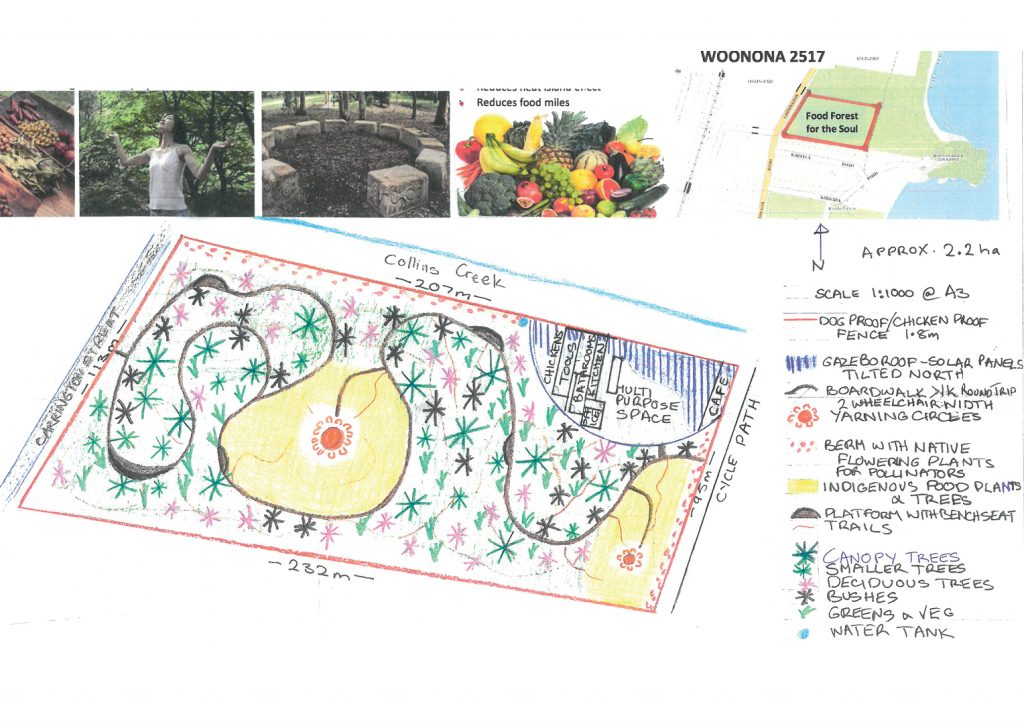Food Forest for the Soul
Suzanne de Vive
''Into the forest I go, to lose my mind and find my soul" - John Muir
Sustainable, agroforestry food production system based on natural woodland ecosystems incorporating fruit and nut trees, shrubs, herbs, vines and perennial vegetables
Food security for locals – fresh food needed with growing unemployment.
Shinrin-Yoku (Forest-Bathing) benefits for everyone. Accessibility via a winding boardwalk for wheelchairs with food within easy picking reach. Others can leave the boardwalk to explore on natural trails.
Yarning Circles (large & small) for use of community and school groups, as well as meditation and dadirri (Deep Listening) groups, creating meaningful connections and communication. Encircled by indigenous food plants and trees. Acknowledging indigenous knowledge and culture.
Green Volunteering, Shinrin-Yoku, Yarning Circles, Meditation, Dadirri & Fresh Food will help reduce or prevent anxiety and depression resulting from unemployment and other stressors
Chickens roam freely eating fallen fruit, scratching and fertilising. Eggs for volunteers or sold to the cafe.
Office/shop/café gazebo with a teaching area for locals to learn how to grow and cook healthy food, prepare indigenous foods, propagate seedlings etc.
Giveaway or sell propagated seedlings for private yards, encouraging neighbourhood food production.
A well-designed food forest creates its own microclimate. 3 inches of leaf litter will hold 1 inch of water. Perennial plants require less water. Etc.
Boardwalks cover swales capturing water and releasing slowly into the surrounding soil maximising rainfall and minimising runoff into the creek.
Berms prevent leaf litter entering the creek.
Reduces heat island effect.
Reduces food miles.
A place for gathering, learning, growing, and healing.
